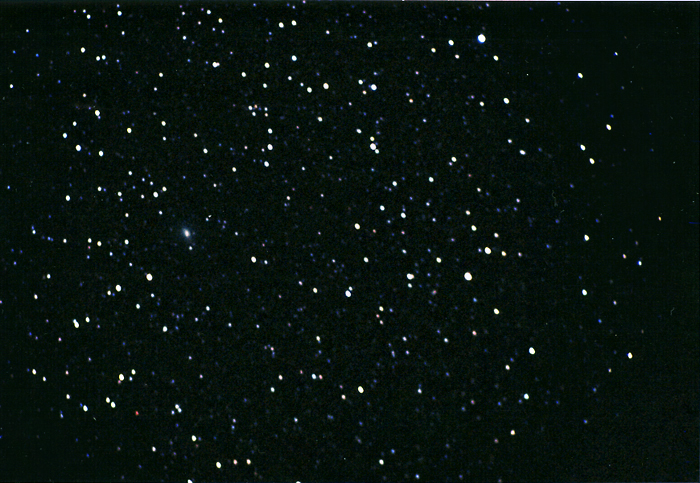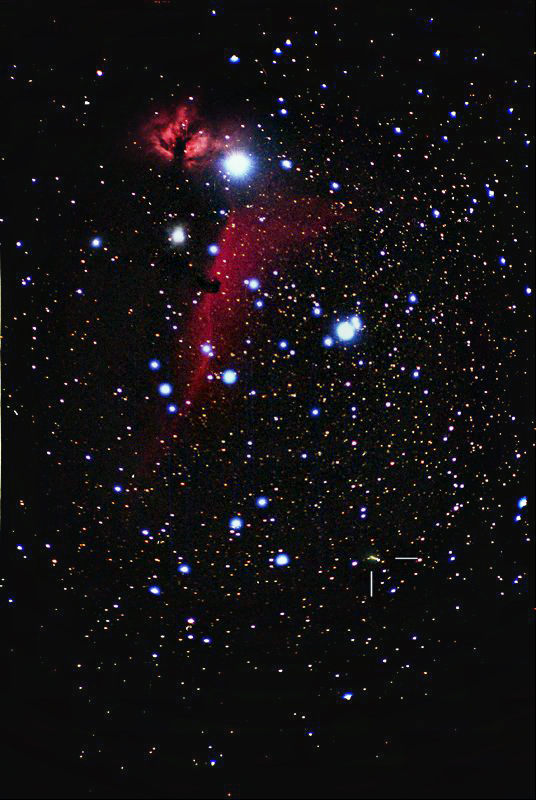
Comet Borrelly September 15, 1994
35 minutes exposure, Fuji 400 film.
5" f/5 refractor at prime focus.
The 1994 return was mquite favourable, with the comet peaking at around 7.8 magnitude, unfortunately for southern hemisphere observers, the northern hemisphere was more favoured.
<
On September 15 and 16, the comet passed between M42 and the Horsehead nebula, so it was a good opportunity for a photograph. Unfortunately the comet was only around 10th magnitude and had a coma about 3' across. As a result it tended to get lost in the images. In each picture, the comet is indicated by the lines.
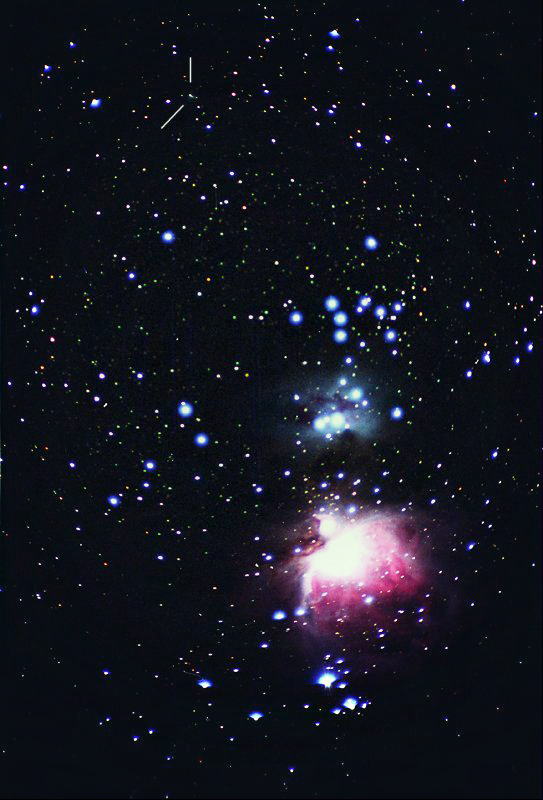
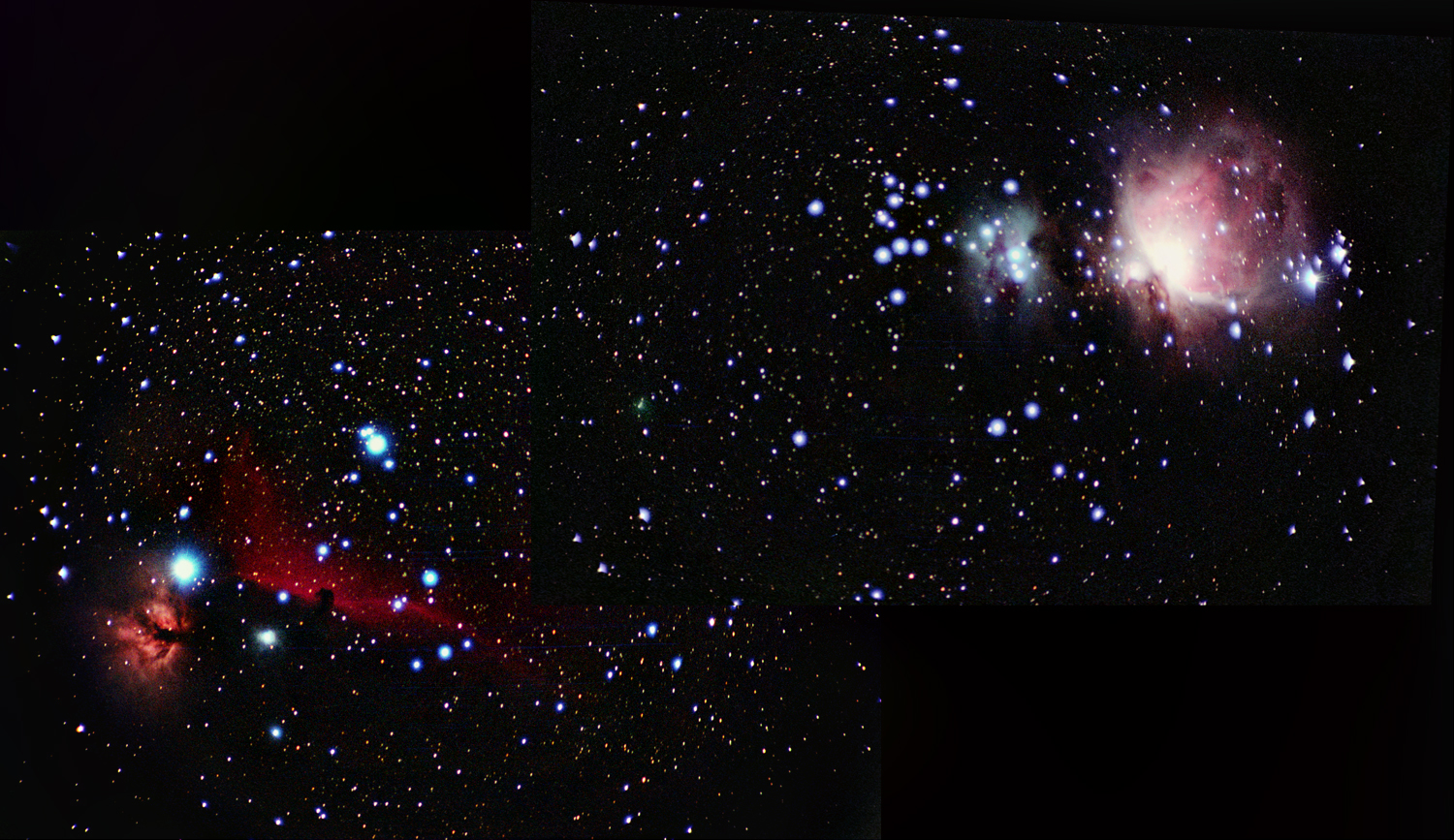
The above two images combined using Photoshop.
After passing the Horsehead, the comet brightened steadily, but unfortunately for southern observers, began to move rapidly northwards. By mid-October the comet had brightened to magnitude 8.7 with a well condensed central condensation and a short. faint tail.
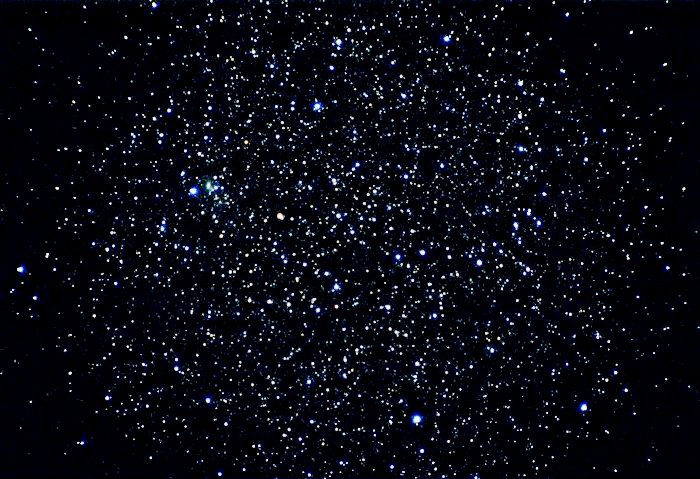
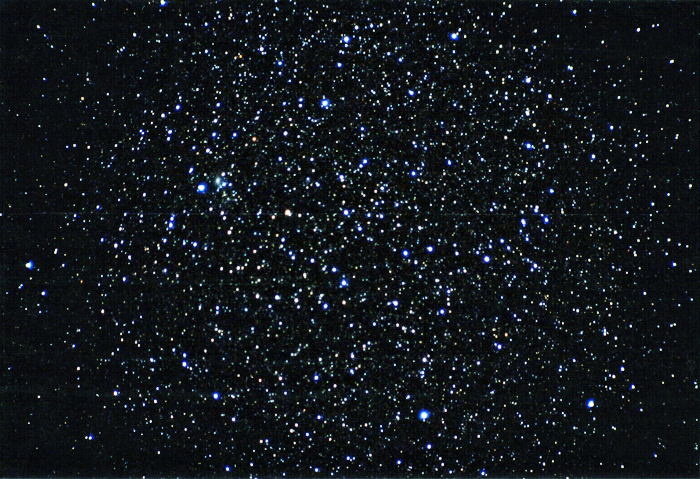
Comet Borrelly October 15, 1994
30 minutes exposure, Fuji 400 film.
5" f/5 refractor at prime focus.
My final observation was in early November, when it had brightened to around magnitude 8.4 and had a 6' coma. Northern hemisphere observers saw the comet peak at around magnitude 7.8 during early December.
